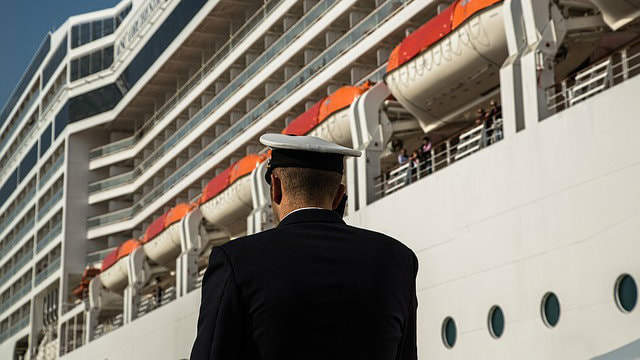Internal Market
European Maritime Safety Agency (EMSA)
Maritime security
Ports
Digital maritime system and services
Safety & Environment
Short Sea Shipping
Maritime Autonomous Ships and Shipping
Seafarers
International aspectsAll details explained about bilateral and multilateral relations and work of the European Union on maritime transport. Partner like US, CHina, Russia, Japan, India and international organisations and convention as SOLAS, STCW, MARPOL, HELCOM, OSPAR, ILO, MLC, etc.
|
Safety & EnvironmentEvery year, 2 billion tonnes of cargo are loaded and unloaded at EU ports, while 1 billion tonnes of oil transits through EU ports and EU waters. This is why the EU is constantly developing and intensifying its maritime safety policy to eradicate substandard shipping, essentially through a convergent application of internationally agreed rules.
|
EU Maritime Safety Agency - EMSAIt provides technical, operational and scientific assistance to the Commission on maritime safety, security and prevention and response, to pollution caused by ships as well as response to pollution caused by oil and gas installations.
|
EU Digital Maritime SystemEU provides EU-wide digital maritime system and services, like SafeSeaNet, PoR assistance and the National Single Windows.
|
Maritime SecurityThe EU legislation consists in the combination of preventive measures contained in the Regulation on enhancing ship and port facility security, on the one hand, and the Directive on port security on the other hand. The EU is willing to help address the practical problem of combating piracy and armed robbery.
|
PortsPorts are vital gateways, linking its transport corridors to the rest of the world. 74% of goods entering or leaving Europe go by sea, and Europe boasts some of the finest port facilities in the world. Ports play an equally important role to support the exchange of goods within the internal market and in linking peripheral and island areas with the mainland of Europe.
|
SeafaresThe European maritime industry suffers from an increasing lack of European seafarers, in particular officers. Such a shortage is likely to increase in the coming years to the detriment of the maritime industry, which needs maritime expertise and experience. The main objective of the European maritime policy is to prevent abusive practices on board ships.
|
ResearchThe EU supports R&S development of maritime transport since 1994. Moreover, the Commission supports RTD platforms such as the Waterborne Technology Platform. In the years to come, the deployment of ‘e-Maritime' services at European and global level will be one of the main priorities.
|
Short sea shippingThe EU has a strategic interest in ensuring the continuous performance of Short sea shipping. As by 2050 short sea shipping has a strong role in reaching the EU transport goal of reducing 60% of greenhouse gas emission generated by transport and by 2030 the shift of 30% of road freight over 300 km to other modes.
|
Sea MotorwaysThe “Motorways of the Sea” concept aims to introduce new intermodal maritime-based logistics chains in Europe, which should improve our transport organisation within the years to come. These chains will be more sustainable, and should be commercially more efficient than road-only transport.
|
Useful linksConnect with all European and World Organisations on Maritime..
|
StudiesFind out the studies carried out for the European Commission..
|
Source: European Union, http://www.europa.eu/, 1998-2024
|
Brussels - Milano - Nice - Tokyo
|
eEuropa Belgium
Avenue Louise, 367 1050 Brussels BELGIUM Bld. Franck Pilatte, 19 bis
06300 Nice FRANCE YONO HOUSE 9-1 KAMIOCHIAI, SAITAMA-SHI, SAITAMA-KEN 〒 338-0001 JAPAN Via S. Veniero 6 20148 Milano ITALY |
All rights reserved - © Copyright eEuropa Belgium 2020-2024














